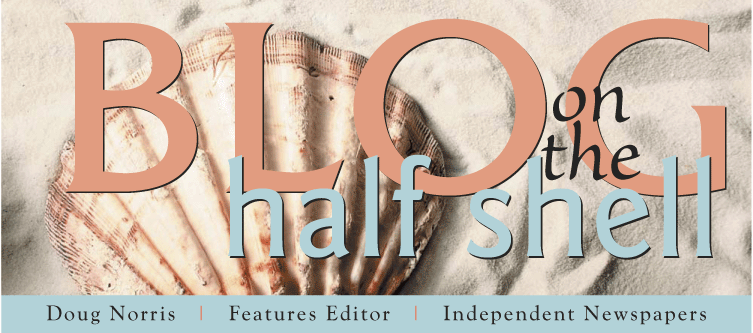I’ve traveled to Arctic, Hope, Moscow, Wyoming, Berkeley, Wyoming, Carolina, Galilee and Jerusalem, but never saw any narwhals, the Clinton Library, KGB, Big Sky, hippie professors, James Taylor or the Lord’s disciples. All of those villages exist in Rhode Island, an eclectic mix of exotic locales variously centered around wiener joints, junkyard dogs and rock crabs.
Most Rhode Islanders rarely leave the armchair to travel. To them, Manville in Lincoln is a village of survivalist Paul Bunyan-types, where football is played every day, cheap beer and hot wings are served for breakfast, lunch and dinner, and the local library is stocked only with back issues of the Sports Illustrated swimsuit issue. Locustville in Hopkinton invites the plague every seven years or so. Everybody wears plate armor in the Cranston burg of Knightsville. The West Greenwich villages of Nooseneck and Nooseneck Hill were so named to keep people from East Greenwich from ever visiting. Monks escaped persecution in Cumberland in the village of Abbot Run. Rhode Island hair stylists all serve an apprenticeship in the Hopkinton village of Barberville. “Beowulf” was required reading for first graders residing in the former hamlet of Saxonville (Burrillville). Noah’s second home was Arkwright in Coventry. People still squeeze the Charmin in the Burrillville village of Whipple. To this day, the Smithfield village of Stillwater celebrates its military victory over rival neighbors in Fizzywater. Residents in Clayville (Scituate-Foster) walk with a strangely animated, stop-motion gait. According to the latest census, there are no Clydes in Clyde, a village in West Warwick. We have also learned that there were slaves in Liberty (Exeter), not everyone is happy in Harmony (Glocester) and sap runs amok in Mapleville (Burrillville).
From Moosup Valley to Diamond Hill, Bristol Ferry to Summit, Hopkins Hollow to Watch Hill, Rhode Island villages evoke mystery and history, even though many of them today are little more than overgrown cemeteries squeezed between a convenience store and a Dunkin’ Donuts. Some are named for prominent features: Lime Rock, White Rock, Greystone, Rocky Brook. Dozens are derivatives of Narragansett and Wampanoag terms, including Apponaug (“where he roasts oysters”), Chepachet (“devil’s bag”) and Escoheag (“this is as far as the spear-fishing goes”).
And then there are the districts: Graniteville in Johnston (where there was a lot of granite); Frenchtown in East Greenwich (where there were a lot of French); Merino in Johnston (where there were a lot of sheep); Fruit Hill in North Providence (where people tossed their bananas); Rumford in East Providence (where pirates retired); Sand Dam in Chepachet (where beavers eschewed mud for drywall); Tiverton Four Corners in Tiverton (where people never figured out what to call a crossroad); and Hamlet in Woonsocket (where there was a lot of Shakespearean drama).
Few people have heard of these places because the great travel writers – the likes of V.S. Naipaul, Jan Morris, Pico Iyer, Bruce Chatwin, Paul Theroux and Eric Newby – never bothered to visit. The great Rhode Island travel book – “Out of Annawamscutt” or “In Ponaganset” – has yet to be written.
What is your favorite Rhode Island travel story?
[Blogger’s note: With apologies to my reader (we really do have to get you a name), after today Half Shell will clam up for the unforeseeable future. We’re taking our notebook and heading to South Africa for a few weeks. The rest is unknown. If you’d like, you can follow our adventures under our alias travel blog, Clams Got Legs, which will be revived in February, with the goal to post at least once a week. Until we link again, keep it raw…]
Monday, January 28, 2013
Subscribe to:
Posts (Atom)

